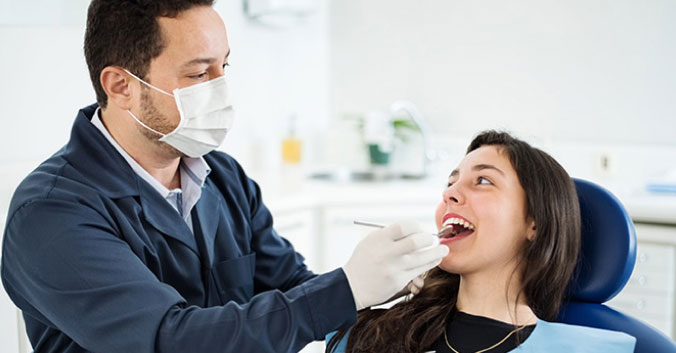
5 tips for ergonomic success in your office
As a dental professional, maintaining proper ergonomics is crucial to preventing repetitive strain injuries and musculoskeletal disorders. Check out these five top tips to help you stay ergonomically healthy as you care for your patients.
- Engage your core. The key to supporting your upper body and spine is engaging your core muscles. Rather than "sucking in," think of tightening your abdominal muscles the way you would before laughing or coughing. This bracing action protects the weaker muscles from strain when leaning over patients.
- Position yourself properly. Take the time to get your positioning right before starting procedures.
- Move your stool close to the patient's head.
- Keep your feet flat.
- Adjust the stool height for a slight downward slope of your thighs.
- Maintain a neutral wrist position.
- Sit up straight with your weight evenly distributed between your feet and the stool.
- Adjust the patient’s position. The patient's positioning is just as important as your own. Recline them so your work area is at or above elbow level. Make sure they’ve moved their head to the end of the headrest, and ask them to tilt their head as needed.
- Use ergonomic equipment. Incorporate tools like loupes and headlamps to minimize strain from leaning in to see. Grip instruments lightly instead of clenching. Don’t forget to invest in good chairs for office staff who may spend large parts of their days sitting at desks. For practice owners, providing ergonomics training is a wise investment to prevent injuries and lost productivity.
- Stretch and exercise. Take regular breaks to stretch your spine, arms and legs. Even 10 minutes of stretching can help to relax strained muscles.
While you can't eliminate all physical strain in dentistry, these tips can significantly reduce your risk of developing costly and career-limiting musculoskeletal issues. Small changes can make a big difference in your long-term joint and muscle health.
Recent posts
- Delta Dental is partnering with dental schools to offer exclusive CE courses
- Drive better patient experiences with benefit conversations
- Offer care beyond the chair with teledentistry
- Healthy mouths begin with hygienists
- How to educate patients and make them partners in oral health
- Dr. Justin Perdichizzi — serving those who served
- Get your patients to make (and keep) their dental appointments
- One sign-on, many advantages
- Delta Dental hosts in-person Provider Advisory Council in Arizona
- Tooth be told, we love our dentists
